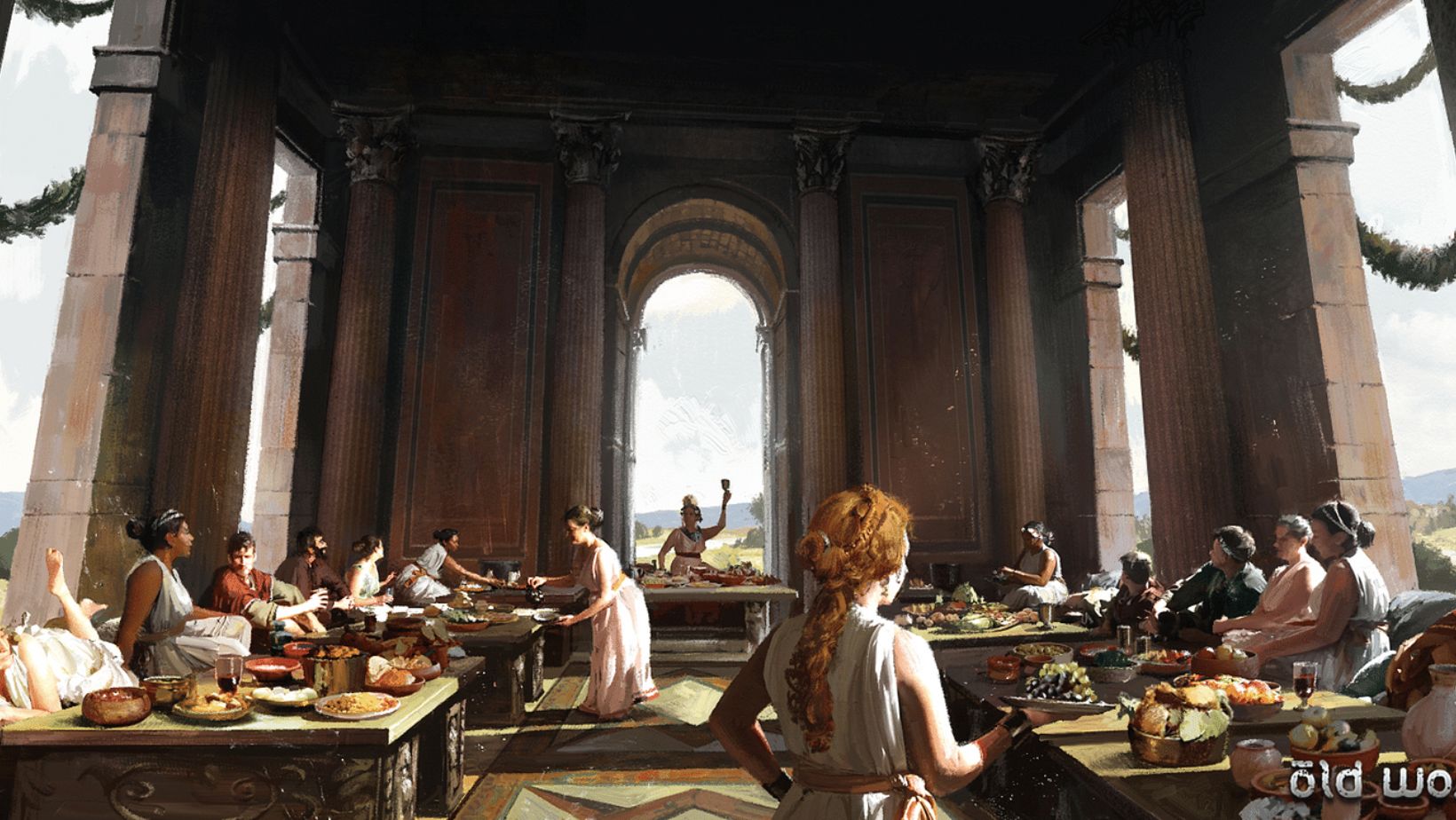When we talk about ancient Rome’s turbulent history, few stories are as compelling as that of Vitellius’ downfall. This was not just any fall from grace; it was a plummet that shook the very foundations of the Roman Empire. Born into privilege yet fated for disaster, Aulus Vitellius was at the helm during one of Rome’s most chaotic periods. So, how did things go downhill so quickly? Was it sheer bad luck, or were there darker forces at play? From being hailed emperor to meeting a grisly demise, let’s unravel how this once powerful leader fell victim to circumstances beyond his control.
Table of Contents:
- The Rise and Fall of Emperor Vitellius
- The Short and Tumultuous Reign of Vitellius
- The Downfall and Demise of Emperor Vitellius
- The Legacy and Impact of Vitellius’ Rule
- Conclusion
The Rise and Fall of Emperor Vitellius: Vitellius’ Downfall
In the chaotic “Year of the Four Emperors,” one name stands out: Aulus Vitellius. Born in 15 AD to a powerful political family, Vitellius rose through the ranks under emperors like Caligula, Claudius, and Nero.
But it was the power vacuum left by Nero’s death in 68 AD that propelled Vitellius to the throne. As governor of Germania Inferior, his troops proclaimed him emperor in opposition to Galba.
Early Life and Career of Aulus Vitellius
Vitellius was born into privilege, the son of Lucius Vitellius, a three-time consul and close friend of several emperors. Young Vitellius entered public life early, serving as consul in 48 AD and proconsul of Africa in 60/61 AD.
His early career was marked by a knack for currying favor with emperors through shared vices like gambling and chariot racing. This talent would serve him well in the tumultuous year of 69 AD.
Vitellius’ Rise to Power During the Year of the Four Emperors
The year 69 AD was a turning point in Roman history. With Nero’s suicide, the Julio-Claudian dynasty ended, leaving a dangerous power vacuum. Galba, Otho, and Vitellius would all claim the throne quickly.
Vitellius, as governor of Germania Inferior, was well-positioned to make a power play. On January 2nd, 69 AD, his troops proclaimed him emperor, setting the stage for his march on Rome.
The Short and Tumultuous Reign of Vitellius: Vitellius’ Downfall

Vitellius’ reign, though brief, was anything but uneventful. His ascension marked the beginning of a civil war that would see four emperors in a single year.
Vitellius’ March on Rome: Vitellius’ Downfall
After being proclaimed emperor, Vitellius divided his forces. One army marched through Gaul, while the other headed to confront Otho, Galba’s successor. The two sides met at the First Battle of Bedriacum on April 16th, 69 AD.
Otho, facing defeat, took his own life. Vitellius entered Rome unopposed, his claim to the throne seemingly secure. But storm clouds were gathering on the horizon.
The Challenges Faced During Vitellius’ Brief Reign
Despite his military victory, Vitellius struggled to control his unruly troops, who engaged in looting and violence. His own reputation for extravagance and cruelty, fueled by the biases of later historians, didn’t help matters.
Meanwhile, the legions in the east were stirring. They had proclaimed their own emperor: Vespasian, governor of Judaea. As Vespasian’s forces marched on Rome, Vitellius’ grip on power began to slip.
The Downfall and Demise of Emperor Vitellius: Vitellius’ Downfall
Vitellius’ reign, marked by excess and instability, was doomed to be short-lived. As the year 69 AD drew to a close, a new power was rising in the east: Vespasian, soon to found the Flavian dynasty.
The Rise of Vespasian and the Flavian Dynasty
In July 69 AD, while Vitellius struggled to maintain control in Rome, the legions in Egypt and Judaea declared for Vespasian. Led by Marcus Antonius Primus, Vespasian’s forces marched on Italy, defeating Vitellius’ army at the Second Battle of Bedriacum in October.
This victory marked the beginning of the Flavian dynasty and the end of Vitellius’ short reign. The historian Tacitus, in his “Histories,” paints a vivid picture of this turbulent year in Roman history.
The Final Days and Death of Vitellius: Vitellius’ Downfall
With Vespasian’s forces at the gates of Rome, Vitellius made a last desperate attempt to save himself. According to the historian Suetonius, he tried to abdicate in favor of Vespasian’s brother, Titus Flavius Sabinus.
But it was too late. On December 20th, 69 AD, Flavian forces entered Rome. Suetonius records his ignominious end: dragged through the streets, tortured, and executed, his body thrown into the Tiber.
The Legacy and Impact of Vitellius’ Rule: Vitellius’ Downfall
Vitellius’ reign, though brief, left a mark on the Roman Empire. His rise and fall were symptomatic of the chaos surrounding Rome after Nero’s death.
Vitellius’ Place in Roman History

In the grand sweep of Roman history, Vitellius is often overshadowed by the emperors who came before and after him. His reign is remembered primarily for its brevity and for the civil war that ended it.
Yet his story, as recounted by ancient historians like Suetonius and Cassius Dio, offers a fascinating glimpse into the power struggles and personalities of imperial Rome.
The Lasting Effects of Vitellius’ Brief Reign on the Roman Empire
Vitellius’ ultimate legacy may be as a cautionary tale. His rise and fall illustrate the precariousness of power in the Roman Empire, where an emperor could be made or unmade by the whims of the legions.
The Julio-Claudian dynasty had ended, and a new era was beginning. The Flavian dynasty, ushered in by Vespasian’s victory over Vitellius, would bring stability to the empire after a year of chaos.
Key Takeaway: Vitellius’ Downfall
Vitellius’s quick rise and fall show how fragile power was in ancient Rome. They highlight a year of chaos that ended one dynasty and started another.
Conclusion: Vitellius’ Downfall
The tale of Vitellius is more than just another page in history books; it’s a stark reminder that power is fleeting and often comes with dire consequences. Watching him climb to the top as quickly as he fell from grace is like a crash course in desire, betrayal, and our all-too-human weaknesses, especially when you’re playing in the ruthless playground of politics. While many might see him solely through the lens of failure due to Vitellius’ downfall, he also embodies resilience in facing adversity—albeit ending tragically.
This saga doesn’t merely recount events leading up Vitellius’ demise; rather illuminates eternal truths lurking beneath surface struggles for dominance empire-wide long ago seem today so distant past. Yet those echoes still resonate remind all mortals here today gone tomorrow And thus legacy perhaps cautionary tale every person who dares reach stars without considering perilous journey ahead.

